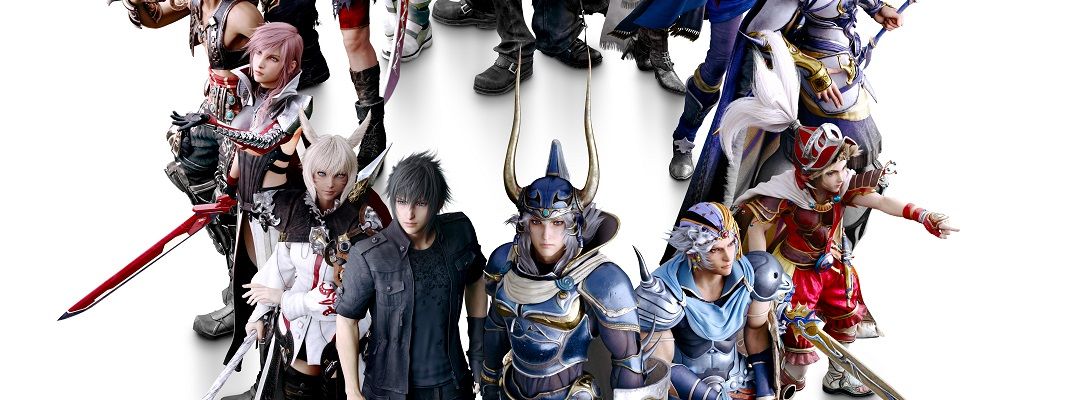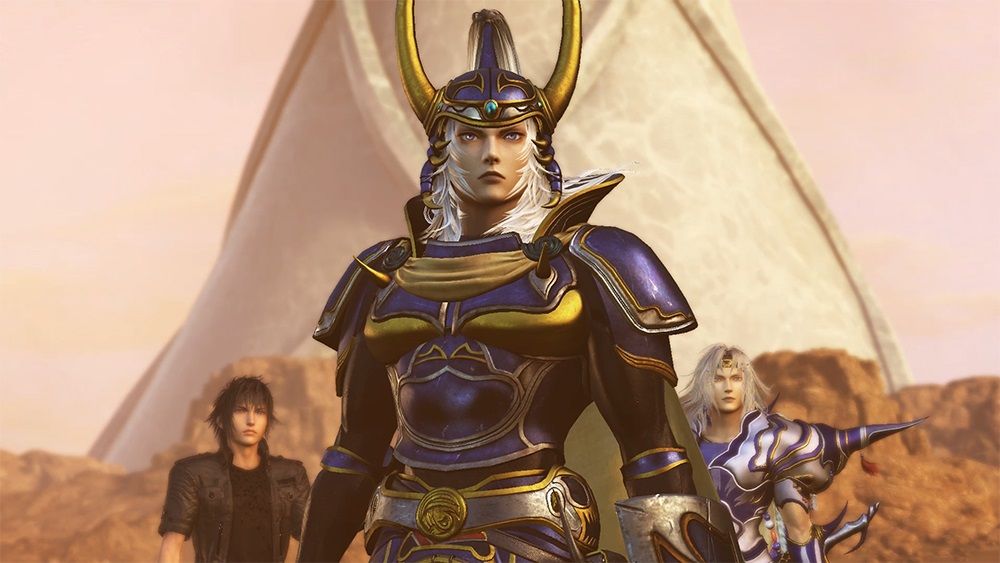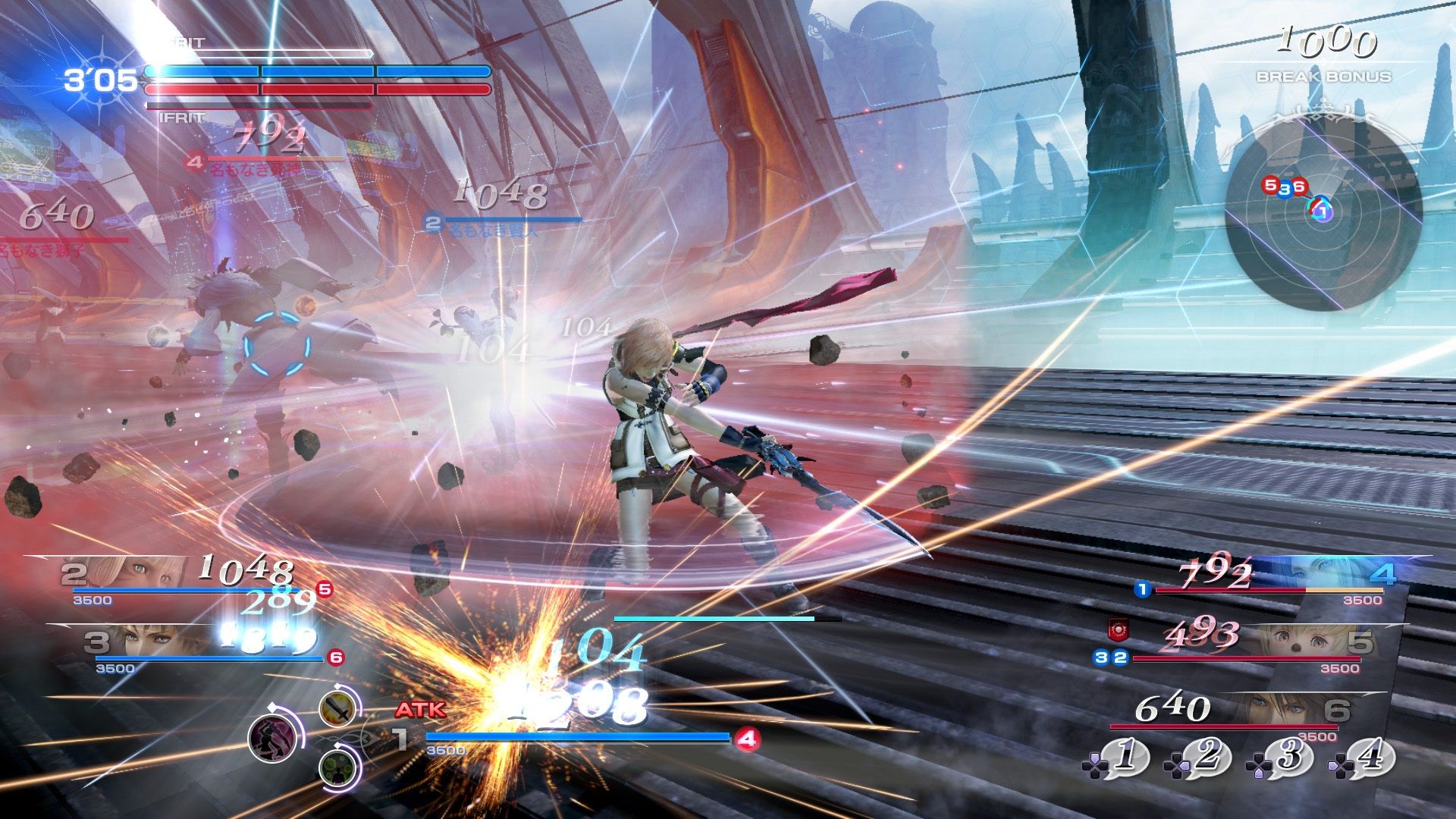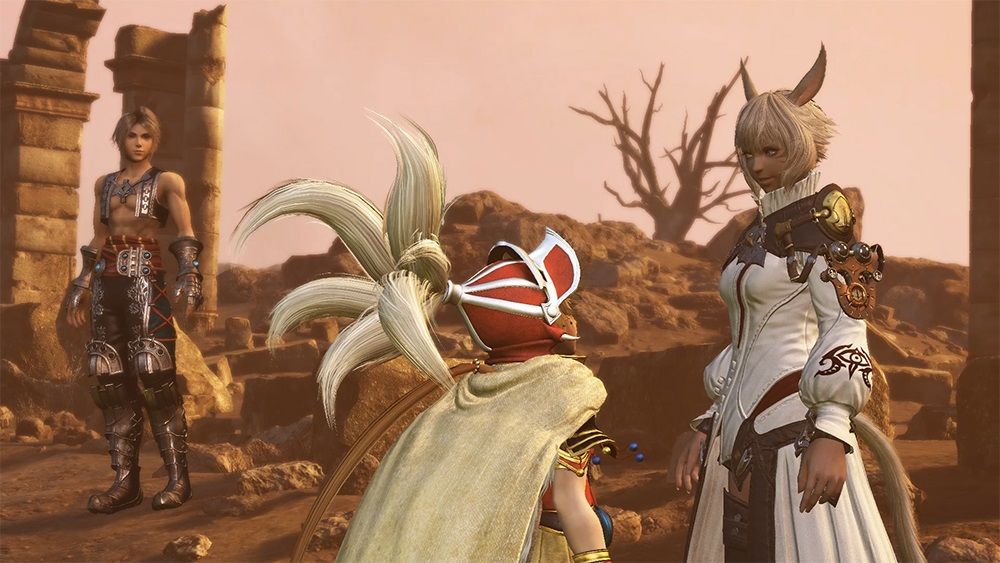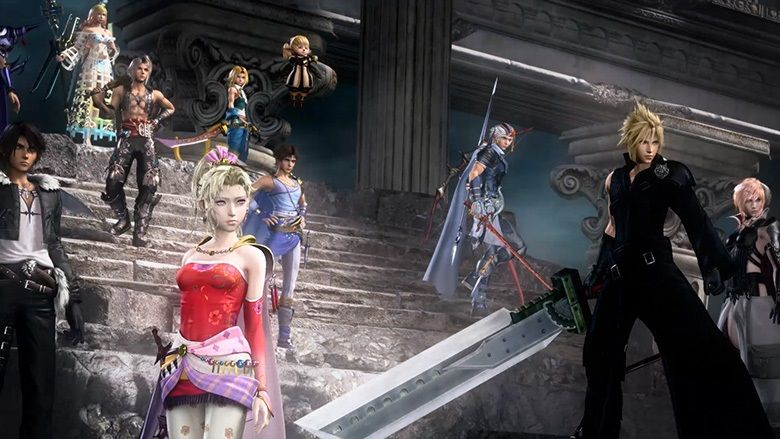Final Fantasy’s thirty-year history spans fifteen mainline RPG, action, strategy, and yes, even fighting games. Back in 2009, Square Enix experimented by fusing RPG mechanics with a fighting game that gave birth to a wholly unique experience, Dissidia Final Fantasy. Released exclusively on the PSP, Dissidia pit heroes and villains from the Final Fantasy franchise against one another. It was a novel idea at the time and Square Enix expanded upon the premise with a prequel, 012. Since then, the series lay dormant until the publisher teamed up with Team Ninja for a third title. Dissidia Final Fantasy NT is the product of this team up, promising to bring back the fighting game all while infusing the formula with new elements. Is Dissidia Final Fantasy NT the perfect fighting game for Final Fantasy fans or does it just abuse fan nostalgia?
Dissidia Final Fantasy NT is a direct sequel to the 2009 game. Even after the deaths of Cosmos and Chaos, World B continued its existence with the new gods, Materia and Spiritus, replacing the old. As World B survives on the energy created from battles, both gods summon forth the warriors of Cosmos and Chaos to do battle once more. Weary of another fight, the warriors begin digging into the reasons behind this new conflict.
While Dissidia stories were never all that great, NT’s is just bad. Despite a solid amount of cutscenes with plenty of source material to draw from, NT’s plot never goes anywhere. The characters split off into branching paths, but the game lacks any sense of suspense or discovery until the end. Team Ninja did at least manage to capture the personality of the diverse cast of characters and seeing how a newer Final Fantasy character like Noctis or Y’shtola would interact with classic characters like Squall and the Warrior of Light is entertaining. Interacting with the story and completing it, however, is a different matter. Though short, finishing the story is going to take a while to finish due to a restrictive design. Presented as nodes on a chart, the story must be unlocked a piece at a time by spending the currency, Memoria. Every once in a while, you’ll be able to unlock a block of nodes that includes an actual fight, but for the most part, it’s just cutscenes. Memoria can only be obtained by leveling up the player profile, which is easy at first but then becomes a hassle the higher the level gets. Why the story needed such an arbitrary requirement is unknown, especially since what’s being unlocked isn’t all that great.
What shines through is the gameplay. NT utilizes the Bravery Combat system first introduced in the original PSP game. The goal is to raise your bravery and lower your enemy’s through bravery attacks and when enough bravery is accumulated players can unleash an HP attack to drain the enemy’s life bar. The first team to lose three lives loses. Thrown in are EX moves that when activated either perform a bravery draining move, buff the user or places status effects on enemies. The combat is no doubt intimidating at first, but after a few matches, it’s easy to get the gist of it. Even after all these years, the Bravery Combat system continues to be enjoyable, even with some of the changes Square Enix have made. It’s still about finding the perfect time to strike, figuring when to unleash an HP attack and how to take advantage of an opponent’s poorly-timed attack.
Gone are the 1v1 matches and sense of verticality found in previous games. NT pits two teams of three players against one another for a more team-focused experience. While controversial, the game does manage to make 3v3 work by sacrificing the vertical arenas of previous games in favor of more expansive, flatter ones. Fighting is still as flashy and cinematic as ever, making each battle a real treat to watch. Yet, it would have been nice to at least have the option to choose between 1v1 and 3v3, especially since a few fights in the story mode are less than the standard 3v3.
3v3 does bring with it a whole bunch of issues that the previous games didn’t have to deal with. The HUD is a mess with six different characters stats plastered on the screen, target lines, life bars, and a radar. While nowhere near as bad as it was during the closed beta, the HUD continues to be a distracting presence during the tensest of matches. Targeting can also be a pain as it’s assigned to the triggers rather than the right stick and can be especially annoying when going up against summons in the story. Due to their size, the camera can be a bit spastic when things get tight.
The gameplay is a solid continuation of the PSP games, but the gameplay is only good when you have something to play. Dissidia Final Fantasy NT’s Achilles Heel is not just a lack of content, but an unbelievable amount of recycled content. Outside of the meager story mode, there’s little to participate in. There are online battles, but since you can’t play around with the settings, you’re just engaging in 3v3 matches all the time. Gauntlet serves as the arcade mode, though trials with pre-set parameters unlock for it as you complete the story. Other than that, it’s just more 3v3 matches in Gauntlet. Sparring does let you set your own settings, but you don’t earn XP or rewards from this mode, so it’s mostly a wash.
What makes NT so egregious, however, is the amount of recycled content. Of the twenty-eight characters in NT, only four of them are new. The remaining twenty-four have been lifted wholesale from the PSP games with the same movesets, costumes, and for the majority of characters, the same alternate costumes. Considering all the recycling done, it’s aggravating that there are so few new characters.
Dissidia Final Fantasy NT does feature an RNG loot system. Titled Treasures, these are handed out through leveling up, completing story nodes and just playing the game. They cannot be purchased with real-world money and Square Enix has not indicated whether they will be making that an option. Players can spend earned gil to unlock the items they want, including alternate skins.
Team Ninja put a lot of effort into the visuals. Dissidia Final Fantasy NT looks the part with highly detailed character models and textures. Every character looks as they should based on the games they came from, and the various stages are well-detailed. After seeing what the characters and stages look like utilizing modern day technology, it’s not hard to wish for all Final Fantasy games to receive a remake.
The game even sounds the part. In addition to original compositions, numerous original and remixed tunes from previous Final Fantasy games are also included. To add to the authenticity, all the original voice actors return to reprise their roles. The presentation is filled with fan service and it’s delightful.
Closing Comments:
As the successor to the PSP hits, Dissidia Final Fantasy NT does a lot of things right but gets a lot wrong. The Bravery Combat system remains a unique and exciting way to experience a fighting game. While not everyone will be particularly happy with the 3v3 setup, NT manages to make it work in a way that keeps matches exciting. There’s a lot of depth to the combat and those that stick it out will find an enjoyably unique fighting game. As a love letter to Final Fantasy players, the presentation is on point, allowing fans to re-imagine characters and locations rendered with today’s technology. Unfortunately, the game comes up short in a few areas. The story is terrible and the way it forces players to unlock it through Memoria feels more to do with padding than anything else. NT doesn’t provide enough content to support the robust gameplay on offer and much of it is recycled from the more feature-rich PSP games. Dissidia Final Fantasy NT is a well-presented package with excellent gameplay, but doesn’t pack enough new in to support it.
Dissidia Final Fantasy NT
Reviewed on PlayStation 4 (Pro)
- Platform(s)
- PS4 , PC
- Developer(s)
- Team Ninja
- Publisher(s)
- Square Enix
- Genre(s)
- Fighting

